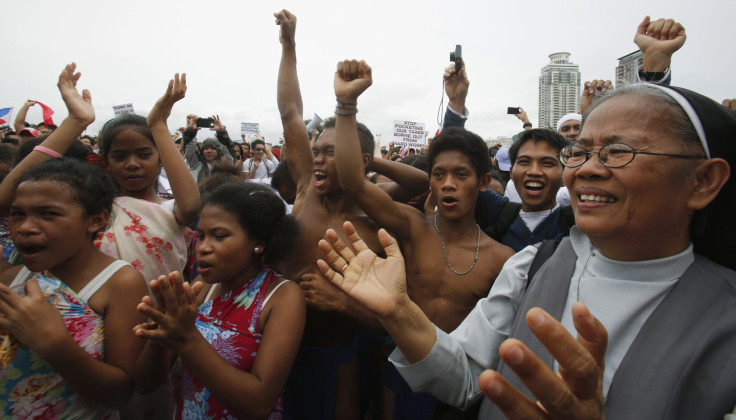Philippine Economy Thriving Amid Asian Slowdown, Posts 7.5 Percent Growth In GDP In Second Quarter

The Philippine economy defied the economic slowdown in large parts of Asia to grow at a higher than expected annual rate of 7.5 percent in the second quarter of 2013, riding on a resilient service sector and buoyant consumer and public spending.
The Philippines’ gross domestic product, or GDP, expanded above the 7 percent mark for the fourth consecutive quarter, data from the country’s National Statistical Coordination Board showed, even as Asian nations including regional giants China and India, and East Asian powerhouses such as Malaysia, Singapore and Indonesia have witnessed a slowdown in recent months, leading many to cut growth estimates for 2013.
“We remain the fastest growing economy among emerging economies in the ASEAN region,” Arsenio Balisacan, the Philippine Socioeconomic Planning Secretary, told reporters, according to Philippines’ Business World website. “The 7.5% growth, which is the same as China’s, surpassed Indonesia’s 5.8%, Vietnam’s 5%, Malaysia’s 4.3%, Singapore’s 3.8%, and Thailand’s 2.8%.”
“While other economies have decelerated due to the global slowdown, the Philippine economy has shown an ability to withstand external shocks,” he added.
The pace of growth is significantly higher compared to the 6.3 percent growth in the corresponding quarter in 2012. The country clocked a 7.6 percent growth rate in the first half of 2013, up from 6.4 percent in the same period last year.
The manufacturing sector grew by 10.3 percent and construction grew 17.4 percent, resulting in a 10.3 percent growth rate in the overall industrial sector, according to official data. The service sector, which, according to Balisacan, accounts for 55 percent of the Philippine economy, grew by 7.4 percent, bolstering the country’s standing as one of the best performers in services exports, especially in business process outsourcing.
Domestic demand and government spending remained high, driving growth, while the country also saw increased investments in fixed assets.
President Benigno Aquino III’s ruling Liberal Party and its allies, who scored a big victory in the mid-term election in May and have gained control of both houses of Congress, are expected to boost government spending on transportation and infrastructure projects to attract more investments.
And, though the peso has received a boost from the buoyant economy, it has not been fully immune to the broad sell-off in emerging markets, in the wake of concerns over the tapering of quantitative easing by the U.S. Federal Reserve. Meanwhile, official data showed that foreign remittances grew 2.7 percent pushing up the gross national income by 6.8 percent from 6.5 percent 2012.
The currency has fallen about 8 percent this year, and the Philippine central bank has said that it will allow the peso to respond to market forces but will intervene if the currency's fall affects consumer prices. And, the Philippines’ stock market too has been volatile recently, having fallen by 12.6 percent since the start of August.
“A current account surplus, a high level of foreign exchange reserves and low foreign currency debt means the Philippines is in a good position to cope with the turnaround in investor sentiment,” according to a research note by Capital Economics.
On Thursday afternoon, the peso was down 0.3 percent at 44.60 to the dollar, and the PSEi stock index was up 3.74 percent.
© Copyright IBTimes 2024. All rights reserved.






















